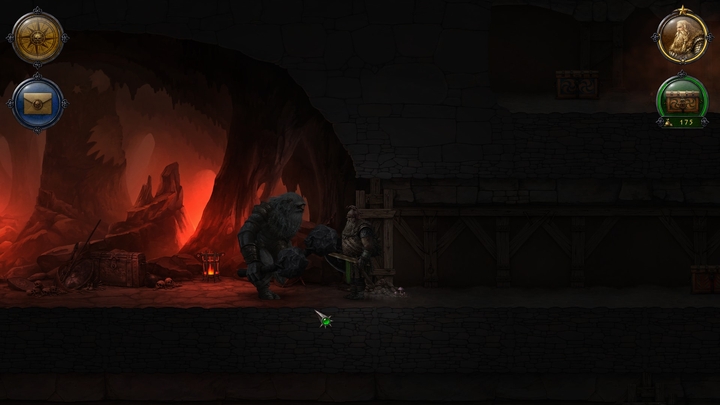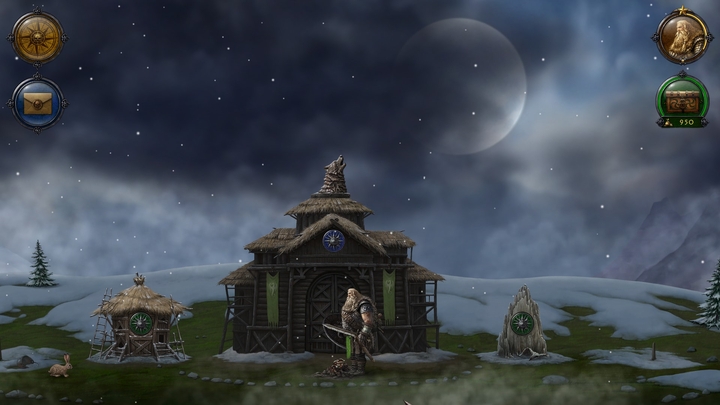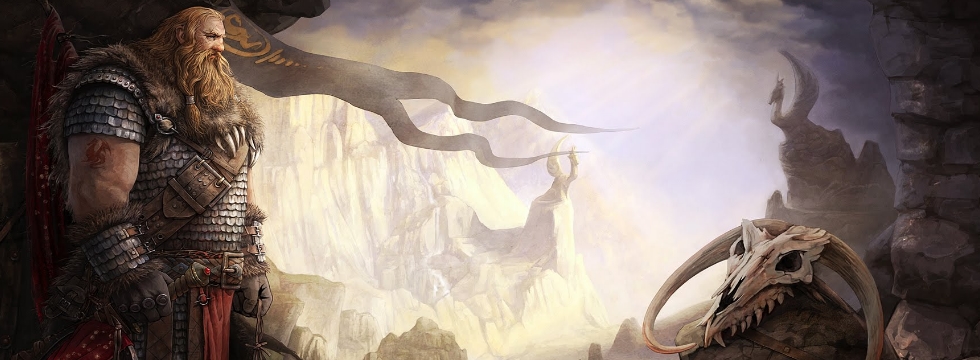author: Mathias Zulpo
Niffelheim hands-on – a Viking’s job is never done
We tested Niffelheim from Ellada Games, the self-proclaimed 2D open world fantasy RPG. Does the lonely journey of a Viking warrior through a frozen realm have any chance to be remembered?
This article was written prior to the game's release.
This text was based on the PC version.
- Indie action adventure game with RPG elements;
- Strong focus on crafting;
- Unique, hand-drawn visuals;
- Playing as a Viking traversing Nordic purgatory;
- First game by Ellada Games;
- Early Access price: EUR 19.99.
"There's more to being a Viking than life itself" – invented by an ancient Norse wiseman, this saying flawlessly captures the spirit of Niffelheim. For the setting of their debut work – an action-RPG featuring hand-drawn 2D graphics and a set of basic mechanics – independent developer Ellada Games chose the Viking "afterlife", allowing the player to take control of a long-bearded warrior who tries to escape purgatory to reach the mythical Asgard. Having tested this Early Access title, we can conclude that this journey – assuming it will prove itself to be more diverse in the long run – may draw the attention of fans of small indie productions.
Before venturing forth…
Even a true Viking needs to be prepared to survive in a hostile environment. And to be prepared, first we need to acquire tools somehow. That's where crafting – the most well-developed element of this production – comes into play. And although the options offered by the game are far from surprising, they fulfill their role well enough. First of all, crafting is what drives exploration (and combat) in Niffelheim, as the easiest way to get the raw materials we need is by traversing the world and the network of caves underneath it, as well as by defeating opponents. Having gathered the components, it is easy (using the schematics provided by the game) to craft things like pieces of armor, weapons, and food, or expand the hero's fortress. Unfortunately, even considering the abundance of various "craftable" materials constantly luring me to catch 'em all, I grew tired of it rather quickly. Personally, I blame the repetitiveness – true, you can craft a lot, but there's only one way you can do it. Alchemy doesn't require any experiments, workshops offer progressively better gear depending on how far we have upgraded them, and all the elements of the fortress are upgraded using the same raw materials. The game failed to provide anything that would engage the player, and as a consequence this aspect of the game also fails to live up to its full potential.

The same thing happens when it comes to character progression, the most RPG-like aspect of Niffelheim. Passive skills are developed by being used (defeating enemies increases Warrior skill, crafting items increases Craftsman skill, etc.). Gathering an appropriate number of said skills enables us, in turn, to break seals, providing further passive bonuses for the selected stat. The end result: as it is now, the whole game boils down to less-than-motivating character progression, and filling up the character's inventory with more powerful stuff.

Other elements of the game do little to compensate for those shortcomings. To be honest, the combat system is rough around the edges; and that's not how Vikings like their weapons. Slashes with an ax, a sword or any another type of melee weapon, as well as animations of shooting from a bow or using a shield, lack fluency and that satisfactory feeling of delivering a good blow. By the way, if you think of using a shield, my advice is: don't. I found out the hard (and painful) way that a well-tailored suit of armor works much better as protection (and doesn't slow you down in the process). I wasn't far into the game when I felt the annoying absence of counterattacks (including them would seem like a great idea from the perspective of combat mechanics, not to mention the fact that it is almost a mandatory feature in this type of production) as well as notifications about the damage inflicted – instead Niffelheim supplies us with the opponent's health bar, located at the top of the screen. Having to watch it constantly inevitably messes up the pacing of skirmishes.

The only sure way to tell one enemy from the other – aside from their looks – is, in fact, by the amount of health they posses. Be it a wolf, a spider, or a troll – it makes virtually no difference, because, after a sufficient number of (monotonous) clicks, they all die (and drop crafting materials) the same. This fact certainly affects the diversity of gameplay, obviously in a negative way – no magic, limited inventory, and typical hero progression reduce our journey across the lands of Niffelheim to level grinding, just to feel more "immortal" as we go. And since opponents don’t scale with the character level, absolute dominance can be achieved quickly and with no trouble. I fear that such an approach may result in low replayability and, ultimately, cause the production to be quickly forgotten.
Full version of Niffelheim will include several gameplay elements which have yet to be implemented. Among things worth mentioning we have the arena mode, where we will get a chance to try out new gear as well as our skills against other players. The multiplayer mode is also less than alive at the moment, but it will eventually allow us to cooperate or compete with other players.

The deeper you go…
A Viking-themed game without exploration seems virtually impossible. The team at Ellada Games apparently agrees (although cautiously), providing the players with a limited but well thought-out and well-developed network of locations. In the current build I was able to visit five realms, four of which were scraps of land all similar to each other, and one – a town – offered access to shops selling raw materials, gear, and anything else we can afford when having lots of gold and little desire to craft items. The main draw of the said realms – other than the free-for-the-pruning flora and blood-thirsty fauna – are the dungeons – locations filled with enemies and chests, created solely for the purpose of "testing" the build of our character. We can enter them on our own or at our client's request – quests in Niffelheim are currently limited to sending the Norse hero on underground expeditions in order to obtain raw materials, and judging by the creators' announcements, the future won't bring many changes in that matter.

In Niffelheim even death becomes simply a pretext for continuing our journey – the soul of the hero (should its owner drop dead) must travel the road that separates it from the body. Then the Viking simply comes back to life. This seemingly casual solution is to become an important element of the game in the future, when the multiplayer mode matures. Although at the moment the servers are empty, the creators are hoping that after the release, players will engage in battles (aimed at conquering foreign realms) or mutually beneficial cooperation, testing new types of weapons or effects of unknown potions.

What captivated me in Niffelheim were the consistency and quality of the visuals. Its hand-drawn world – persistently avoiding the addition of any spectacular frills in the form of particle effects or unnecessary post-processing – reminded me of the fairytale-like Machinarium, and it doesn't fall one bit behind it in terms of quality. The location design, and more precisely its "unified diversity", deserves special praise; each of the five realms is artistically distinct without losing the Nordic vibe of the whole setting. Other things I marveled at were the great care applied to the visuals (texture repetition was extremely rare, and the meticulousness with which the small team approached their design deserves respect) as well as the little tidbits, like dynamically changing atmospheric effects, which not only looked good, but also affected the mobility of the hero.
One more thing that builds and complements the game’s atmosphere is without a doubt the subdued, sensual sound layer, boasting a truly Nordic spirit. The music in Niffelheim is soothing especially during the casual wanderings, when it is not accompanied by the unpleasant crackling of mediocre sound effects.

To say that Niffelheim gives off the impression of being a flash game would be making too little of it, calling it a full-fledged classic 2D RPG on the other hand – a wild overstatement. I, personally, would rather describe the project from Ellada Games as a well thought-out, well executed, setting-focused action adventure game. Niffelheim isn't here to make any breakthroughs; however, it will undoubtedly be a treat for anyone who either likes to give a chance to all indie games they stumble upon, or have always wanted to become a troll- and giant spider-slaying Viking.




